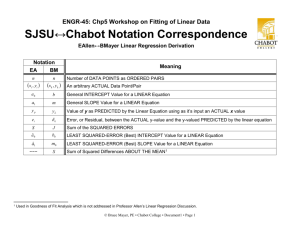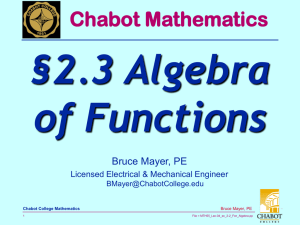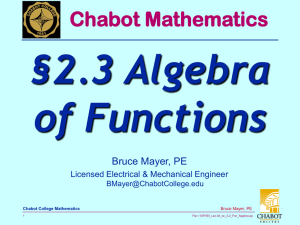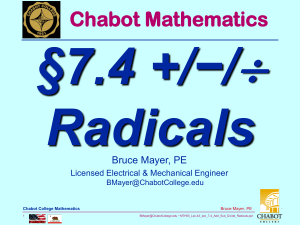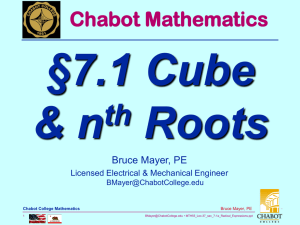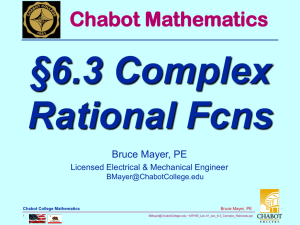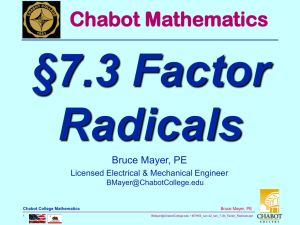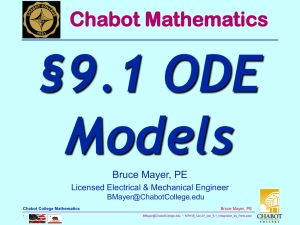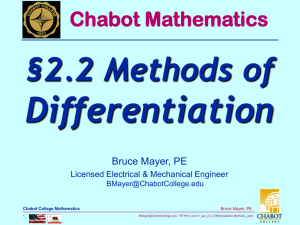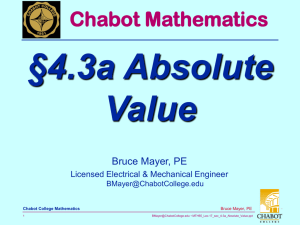SJSU↔Chabot Notation Correspondence ENGR-45: Chp5 Workshop on Fitting of Linear Data
advertisement
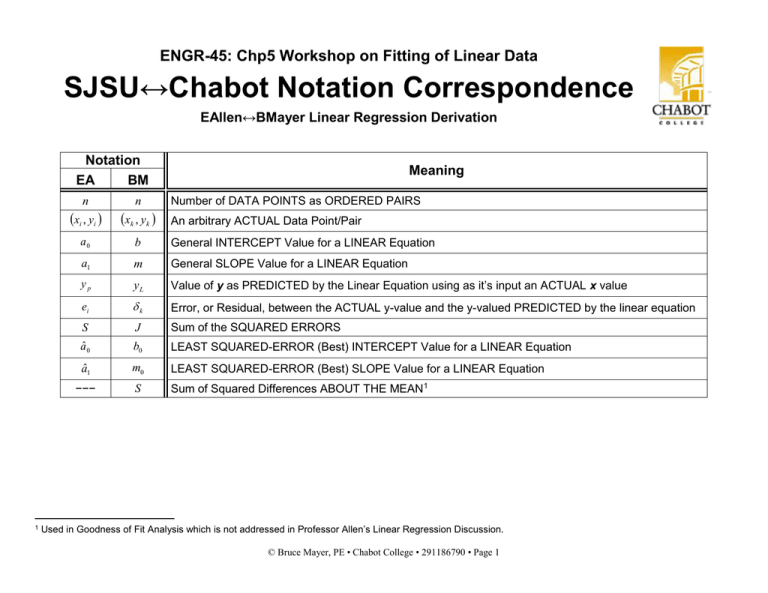
ENGR-45: Chp5 Workshop on Fitting of Linear Data SJSU↔Chabot Notation Correspondence EAllen↔BMayer Linear Regression Derivation Notation EA BM 1 Meaning Number of DATA POINTS as ORDERED PAIRS n n xi , y i xk , y k a0 b General INTERCEPT Value for a LINEAR Equation a1 m General SLOPE Value for a LINEAR Equation yp yL Value of y as PREDICTED by the Linear Equation using as it’s input an ACTUAL x value ei k Error, or Residual, between the ACTUAL y-value and the y-valued PREDICTED by the linear equation S J Sum of the SQUARED ERRORS â 0 b0 LEAST SQUARED-ERROR (Best) INTERCEPT Value for a LINEAR Equation â1 m0 LEAST SQUARED-ERROR (Best) SLOPE Value for a LINEAR Equation −−− S Sum of Squared Differences ABOUT THE MEAN1 An arbitrary ACTUAL Data Point/Pair Used in Goodness of Fit Analysis which is not addressed in Professor Allen’s Linear Regression Discussion. © Bruce Mayer, PE • Chabot College • 291186790 • Page 1 Linearization Consider this set of statements by Professor Allen regarding SCATTERED (x,y) Data: Whether there appears to be any functional relationship at all among the data If there is a relationship, determine which is the independent variable and which is the dependent variable. Determine whether there is a linear relationship between the data, and why you might expect one. If the relationship is not linear, determine whether there is a way to transform the data so that it is linear. Consider this Electrical Circuit Shown at Right. Say that we need to determine the RESISTANCE value for RL. Furthermore, we have at our disposal TWO instruments: a POWER METER that is part of the Voltage-Based Power supply, Vs o Measures the Power dissipated by RL in WATTS an AMMETER, A, that can be inserted into to the circuit as shown o Measures the Current flowing thru RL in AMPERES, or “Amps’ for short From PHYS4B and/or ENGR43 we expect this physical relationship between the resistor Power, P, and the resistor current, RL: P RI L2 Recognizing P as the dependent variable and I as the independent quantity the power equation can be transformed to linear form by: P y A simple, Power Dissipating Electrical Circuit. The Value of RL is UNKnown Em I L2 x Thus the NON-Linear (it’s quadratic) Power equation can be viewed, using the above transformation as LINEAR in the current-Squared P RI L2 Linear Transform y mx So a plot of P vs. (IL)2 should produce a STRAIGHT LINE, thru the ORIGIN, with a SLOPE equal to the resistance value of RL See the next page for an example of RAW and TRANSFORMED Resistor Power Plots © Bruce Mayer, PE • Chabot College • 291186790 • Page 2 Prand vs I 1000 900 800 700 Power (W) 600 500 400 300 200 100 0 -100 0 0.5 1 1.5 2 2.5 3 Current (Amps) 3.5 4 4.5 5 Prand vs I2 1000 900 800 700 Power (W) 600 500 400 300 200 100 0 -100 0 5 10 15 Current-Squared (Square-Amps) 20 25 Print Date/Time = 29-May-16/04:00 © Bruce Mayer, PE • Chabot College • 291186790 • Page 3
